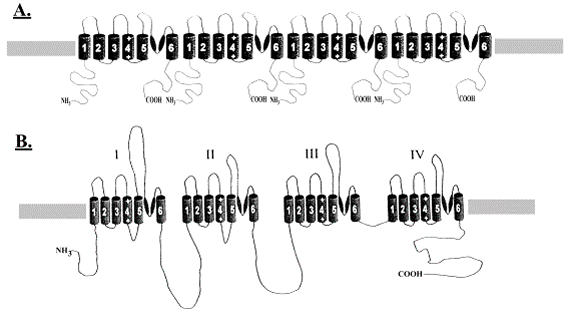Preface | Introduction to Problem Solving | Problem Sets | Acknowledgments
| F.8. Na+/K+ Channels <<Previous Problem | PPDF |
8.Pictured below are typical cartoons of two monovalent cation channels that are found in the plasma membrane of different nerve and muscle cells.
 |
One can imagine a variety of questions being asked about these channels
(at different levels of difficulty); here are some examples: (Can you
think of others?)
A. Being integral membrane proteins, these channels are very hydrophobic
molecules and not easily assessed by most biochemical techniques. How
then were the structures depicted in the figures determined?
B. How do these channels function? Draw their likely three-dimensional
structures and briefly describe, with appropriate labels, how the various
domains and regions are thought to operate.
C. Which cartoon represents the Na+ channel, the K+ channel?
D. Relatively speaking, K+ channels are highly diversified
in terms of structure and function, while Na+ channels are
a more close knit family. Many cells, for example, exhibit one Na+
channel and several different K+ channels, and the variation
in the latter may be even greater when different tissues ar examined.
Briefly describe at least two different types of K+ channels and speculate
how such variety might be generated mechanistically and why it might have
arisen in the course of evolution.